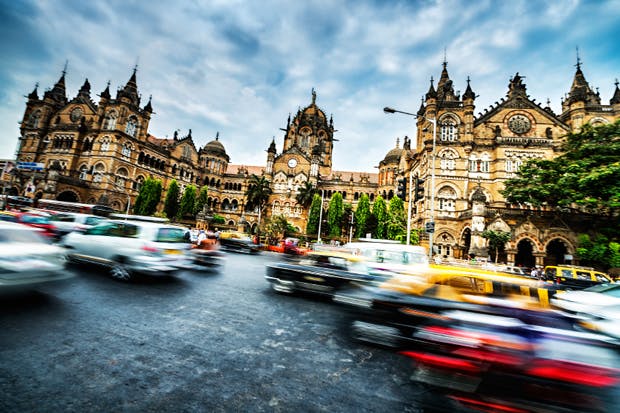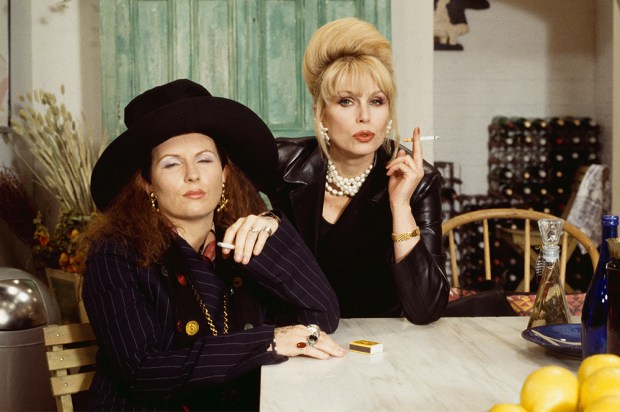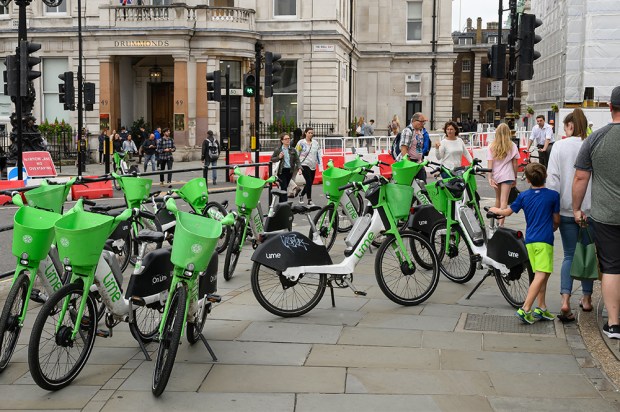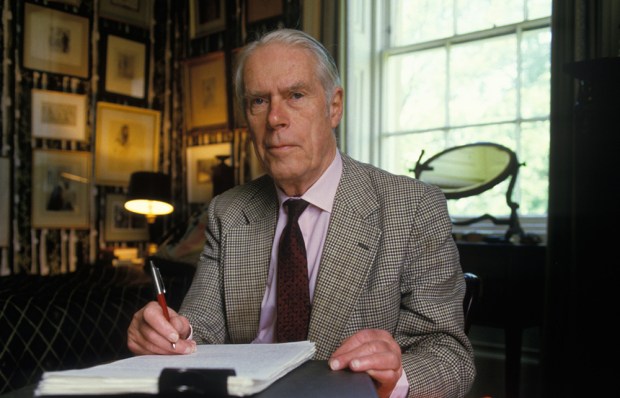Just as the presidential race in America started to get really crazy, I left for India. On the morning of the South Carolina primary, I interviewed Donald Trump from a restaurant near the state capitol. By the next afternoon I was dodging mopeds in a traffic circle in Mumbai. I’d imagined the trip as a respite from the campaign, much needed after weeks of immersion in a world where Bernie Sanders is considered charming and Hillary Clinton is regarded as an intellectual. Yet I found that I couldn’t stop thinking about the race. If you’re brooding about the future of your country, a former British colony is the wrong place to do it. It suggests too much.
The first thing you notice about Mumbai is the first thing you notice about every place the British once occupied, which is how much of themselves they left there. The US spent over a decade and trillions of dollars in Iraq, and the only physical evidence that remains is a concrete embassy compound, some airstrips and a sea of steel shipping containers. Maybe because they never considered that they might leave, the British built entire cities out of stone, with railways to connect them. And they did it with reliably good taste. Too often lost in the hand-wringing over the evils of colonialism is the aesthetic contribution of the British empire. The Brits tended to colonise beautiful places and make them prettier. Bermuda, New Zealand, Fiji, Cape Town — notice a theme? Style wasn’t an ancillary benefit; it was part of the point. Behind every Gurkha regiment marched a battalion of interior designers.
English taste seemed to improve with distance. At home, 19th-century British architecture tended towards excess, layers of rococo baubles alternating with blocky overkill. Abroad, the form became more flexible, often incorporating local features like Moorish arches and minarets. (Contrast this with the French, to whom every colony was a chance to recreate an outer ring of Paris.) The average English customs house on a minor Bahamian island enhances its surroundings more than anything Frank Lloyd Wright ever built. More durable too. British colonial buildings were the most appealing structures in virtually every city the empire controlled. Fifty years later, they often still are. When he seized power in Pakistan, Pervaiz Musharraf never even pretended to settle in the new PM’s residence in Islamabad. He headed for the old British headquarters in Rawalpindi, where he sat beneath ceiling fans sipping Scotch and reading Flashman novels.
Nowhere is the architectural contrast starker and more jarring than in Mumbai. India is on its way to becoming a rich country, and Mumbai is its financial capital. Signs of wealth abound, from ubiquitous cranes to the mobile phones that every chai vendor carries. Fewer people seem to be living on the streets of downtown Mumbai than in midtown Manhattan. The good news is there’s a building boom under way. The bad news is, the results are appalling. Much of the new architecture is ugly, of course, straight from the Soviet-occupied-Poland school of design, but the construction is also shoddy. Buildings put up ten years ago are streaked with rust from exposed rebar, their concrete peeling apart in flakes. Even the newest blocks seem temporary or half-finished, as if nobody cared enough to complete the job. Not unlike post-invasion Baghdad, actually.
Meanwhile, at the south end of town, the Raj still dominates the skyline, and breathtakingly so. Is there a more attractive clock building outside Europe than the Rajabai Tower, completed in 1878? Does America have a single railway station that compares to the one Mumbai commuters have used since 1887? A single post office more impressive than the one the British built there in 1913? A more majestic municipal building than the Bombay High Court? The old section of Mumbai amounts to an open-air time capsule, substantially unchanged from the day Dickie and Edwina Mountbatten flew back to London. Unfortunately, nobody has cleaned up since. The old buildings are filthy and neglected, with broken shutters, missing windows and front lawns piled with rubbish. Just a block or two from the Taj Mahal Hotel, near the ocean in one of the priciest parts of the city, there’s a row of wooden Victorian houses, large and ornate and beautiful. It looks like a postcard, but walk closer. The roofs have been patched with blue nylon tarps. The porches sag where the support beams have rotted. Each one verges on collapse.
There’s something crushingly sad about all this, but also instructive. Empires end, usually more quickly than expected. They’re not always replaced by something better. Worth remembering at election time.
Got something to add? Join the discussion and comment below.
Get 10 issues for just $10
Subscribe to The Spectator Australia today for the next 10 magazine issues, plus full online access, for just $10.














Comments
Don't miss out
Join the conversation with other Spectator Australia readers. Subscribe to leave a comment.
SUBSCRIBEAlready a subscriber? Log in